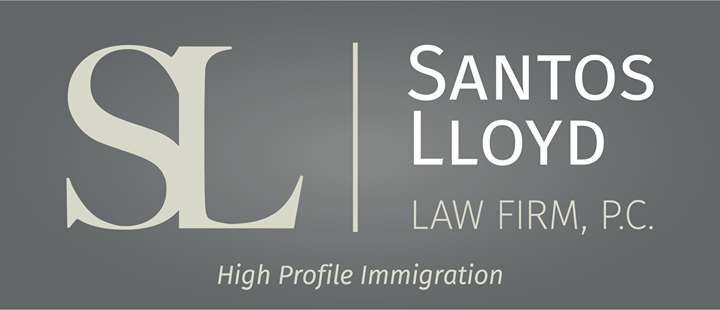Remote Work Policies - Can I work remotely in the United States on my visa?
Monica Zafra • June 29, 2023
The most important factor in working remotely in the United States is proper work authorization.
U.S. Immigration law requires anyone who earns income in the United States to have proper work authorization.
What if I earn income for a foreign employer while in the United States?
Even if working for an employer abroad, working while physically located in the United States is still considered work by the United States government, even if a worker is paid to a foreign bank account. For example, if a B-1/B-2 visa holder is traveling to the United States for tourism or specific business purposes, they may enter the United States to vacation or attend meetings or events, but cannot work in the United States as B-1/B-2 does not grant work authorization.
How can I work remotely?
There is no designated remote worker visa category in the United States, but there are nonimmigrant visas that are flexible. Nonimmigrant work visas such as E, L, TN, F-1, OPT, P-1, and O-1 workers do not have restrictive worksite locations the way some other visas do and there is flexibility regarding remote work. For example, P-1 athletes may travel for work due to their profession, or O-1 professionals as well, but it must be within the confines of their visa.
Which workers are restricted in remote work?
H-1B workers are restricted to work at locations listed in their H-1B sponsorship petition. This is because of the Labor Condition Application (LCA) requirement and prevailing wage analysis. At times, H-1B workers may have "occasional remote work" if their employer requested this. This would occur when the H-1B worker's home address is near and the normal worksite location on the employer's LCA includes the home address. Another instance this can occur is if the H-1B worker will work a significant distance from the LCA worksite. There are required amendment petitions and filing fees that may be required as well.
For H-1B sponsorships, it may be helpful for employers to include as worksite locations the employee's home address and the normal worksite location, if able. USCIS has rescinded two policy memoranda as to third-party site placements and related itineraries for H-1B workers, so it is easier to list an H-1B worker's home address and worksite.
If you have any questions regarding this information, please contact our offices.
This blog is not intended to be legal advice and nothing here should be construed as establishing an attorney client relationship. Please schedule a consultation with an immigration attorney before acting on any information read here.
Monica Zafra
Similar Posts

By Angelica Rice
•
November 26, 2024
What is E-Verify+? E-Verify+ is the newest version of E-Verify, a system run by the U.S. Department of Homeland Security (DHS) to help employers confirm the work eligibility of their employees. Effective October 21, 2024, E-Verify+ includes new features designed to streamline the employment verification process and ensure more accurate, secure results for both employers and employees. The E-Verify system checks a person’s work eligibility by comparing information from their Form I-9 (Employment Eligibility Verification) with records from DHS and the Social Security Administration (SSA). E-Verify+ takes this process further with enhanced capabilities and updated features, which make verification faster, more reliable, and more user-friendly. What’s New in E-Verify+? Automated Work Authorization Extensions For employees who are renewing work authorization, E-Verify+ can now provide automatic updates if the renewal process is delayed. This minimizes disruptions for both employers and employees, ensuring that work authorization continues as long as the renewal is in process. Enhanced Accuracy with Biometric Verification One of the key updates in E-Verify+ is biometric verification, which uses fingerprints or other biometrics to confirm an employee’s identity more accurately. This feature is expected to reduce identity theft and improve the reliability of work authorization checks. Simplified Case Management System E-Verify+ includes an updated case management system that allows employers to resolve discrepancies and update information more efficiently. For instance, if there is a mismatch between an employee’s Form I-9 and government records, E-Verify+ will guide employers on next steps to quickly address the issue. Integration with EAD (Employment Authorization Document) Updates Employees applying for Employment Authorization Documents (EAD) will find that E-Verify+ now includes an integration feature that tracks the status of EAD renewals and provides employers with updates on pending applications. What Does This Mean for Employers? With E-Verify+, employers benefit from a more efficient and reliable employment verification process. Employers who participate in E-Verify+ are better equipped to avoid penalties for hiring unauthorized workers while also reducing administrative burdens associated with verification. The system’s enhanced automation helps streamline the hiring process, which can save time and resources for businesses. What Does This Mean for Employees? For employees, E-Verify+ provides greater security and transparency. Automated work authorization extensions can help prevent employment gaps due to delays in authorization processing, which is especially important for those relying on renewals. Additionally, the use of biometrics means employees can be assured that their personal identity is protected during verification. If you want to find out more about E-Verify or want to better understand the employment verification process, please contact one of our experienced Immigration Attorneys!

By Angelica Rice
•
September 29, 2022
The answer to the question above is, depending on your circumstances, yes! USCIS has established very clear criteria for when a request to expedite a pending travel permit application can be made. These criteria include: Severe financial loss to a company or person, provided that the need for urgent action is not the result of the petitioner’s or applicant’s failure to: Timely file the benefit request, or Timely respond to any requests for additional evidence; A company can demonstrate that it would suffer a severe financial loss if it is at risk of failing, losing a critical contract, or having to lay off other employees. For example, a medical office may suffer severe financial loss if a gap in a doctor’s employment authorization would require the medical practice to lay off its medical assistants. Job loss may be sufficient to establish severe financial loss for a person, depending on the individual circumstances. For example, the inability to travel for work that would result in job loss might warrant expedited treatment. The need to obtain employment authorization by itself, without evidence of other compelling factors, does not warrant expedited treatment. In addition, severe financial loss may also be established where failure to expedite would result in a loss of critical public benefits or services. Emergencies and urgent humanitarian reasons; In the context of an expedite request, humanitarian reasons are those related to human welfare. Examples may include, but are not limited to, illness, disability, extreme living conditions, death in the family, or a critical need to travel to obtain medical treatment in a limited amount of time. An emergency may include an urgent need to expedite employment authorization for healthcare workers during a national emergency such as the COVID-19 pandemic. Nonprofit organization (as designated by the Internal Revenue Service) whose request is in furtherance of the cultural or social interests of the United States; A nonprofit organization seeking to expedite a beneficiary’s benefit request must demonstrate an urgent need to expedite the case based on the beneficiary’s specific role within the nonprofit in furthering cultural or social interests (as opposed to the organization’s role in furthering social or cultural interests). Examples may include a medical professional urgently needed for medical research related to a specific social U.S. interest (such as the COVID-19 pandemic or other socially impactful research or project) or a university professor urgently needed to participate in a specific and imminent cultural program. Another example is a religious organization that urgently needs a beneficiary’s specific services and skill set to continue a vital social outreach program. U.S. government interests (such cases identified as urgent by federal agencies such as the U.S. Department of Defense, U.S. Department of Labor, National Labor Relations Board, Equal Opportunity Commission, U.S. Department of Justice, U.S. Department of State, U.S. Department of Homeland Security, or other public safety or national security interests); or U.S. government interests may include, but are not limited to, cases identified as urgent by other government agencies, including labor and employment agencies, and public safety or national security interests. Clear USCIS error. Not every circumstance that fits in one of these categories will result in expedited processing; expedite requests are discretionary, highly subjective and never guaranteed. Expedite requests are initiated by calling the USCIS contact center and providing your case Receipt Number and reasons for the request. The approximate processing time for an expedite request is 7-10 business days. When you call to request expedited processing, the USCIS Contact Center creates and forwards a service request to the office with jurisdiction over your application or petition. After receiving the service request, the reviewing office may request additional documentation to support expedited processing. A decision on an expedite request is not an approval or a denial of the underlying benefit request. The expedite decision simply informs the requestor whether USCIS will take the benefit request out of date order and issue a decision (approval or denial) faster than the normal processing time.

By Kyle Huffman
•
July 28, 2022
In years past, spouses of certain E and L visa categories were required to apply for and receive an Employment Authorization Document in order to work in the United States. However, as the result of a settlement reached by USCIS in the class action lawsuit Shergill v. Mayorkas on November 10, 2021, USCIS now considers E and L dependent spouses to be authorized for employment incident to their status.

By Santos Lloyd Law Team
•
April 10, 2025
In 2025, the immigration landscape continues to shift under the weight of national security concerns, ushered in by Executive Order “ Protecting the United States From Foreign Terrorists and Other National Security and Public Safety Threats. ” This directive tasks federal agencies—including the U.S. Department of State—with implementing enhanced screening and vetting protocols for all foreign nationals seeking visas or other immigration benefits. The result? A dramatically intensified vetting process, along with mounting concerns from immigrants, attorneys, and civil liberties advocates alike. Traditionally, airport security focused on verifying travel documents and screening for prohibited items, while consular officers assessed the legitimacy of visa petitions and the admissibility of applicants. Extreme vetting, however, represents a significant shift toward a far more invasive and comprehensive investigative process. It now includes detailed background checks, biometric verification, digital forensics, and expansive scrutiny of an applicant’s online presence and criminal or financial records. Since President Trump’s second term began in January 2025, the implementation of extreme vetting has expanded rapidly. Today, border screenings go far beyond routine document checks, encompassing a full-scale evaluation of a traveler’s digital life. This pivot reflects the administration’s intensified focus on national security, but it has also triggered urgent discussions about privacy, due process, and the fairness of modern immigration enforcement. At U.S. ports of entry—especially airports—noncitizens are now subject to rigorous and invasive procedures, including: Inspection of cell phones, laptops, and other devices (including deleted content) Review of social media activity on platforms like TikTok, Instagram, and X (formerly Twitter) Biometric scanning, including fingerprinting and facial recognition These measures are no longer confined to travelers from high-risk countries. In practice, extreme vetting applies broadly across all nationalities, and increasingly affects lawful permanent residents as well. For noncitizens, this new landscape introduces a heightened level of uncertainty and vulnerability. Delays at U.S. consulates for visa issuance or renewal are becoming routine. Travelers must now be acutely aware of these changes, and those attending consular interviews or seeking visa renewals should be prepared to provide additional documentation verifying their maintenance of status, compliance with visa conditions, and the bona fide nature of their visa applications. It is critical to organize supporting materials in advance and be ready to answer questions about employment, education, travel history, and online activity. As the U.S. government continues to expand its use of data-driven risk assessment tools, travelers must adapt to a new normal, one where preparation is essential to navigating the immigration system without disruption.

By Shirin Navabi
•
April 3, 2025
For international business owners and entrepreneurs engaged in cross-border trade with the United States , the opportunity to expand operations and establish a physical presence in the U.S. may be more accessible than expected. The E-1 Treaty Trader Visa is specifically designed to facilitate this type of business activity and offers a strategic pathway for qualifying individuals to live and work in the United States while managing or developing trade relationships. While 2025 has brought a trend of changes in immigration policy, the E-1 visa continues to stand out as a viable and welcoming option . Despite increased scrutiny across various immigration categories, this visa remains suitable for those involved in consistent, qualifying trade with the U.S. Its structure and purpose align well with current business realities, making it a stable choice even amid policy shifts. The E-1 visa is available to nationals of countries that maintain a treaty of commerce and navigation with the United States . To qualify, applicants must demonstrate that they are engaged in substantial trade—defined as a continuous flow of sizable international transactions—primarily between their home country and the U.S. Unlike investment-based visas, the E-1 visa does not require a fixed monetary threshold. Instead, it emphasizes active commercial exchange, such as the regular transfer of goods, services, or technology. This visa is applicable across a wide range of industries , including but not limited to manufacturing, logistics, professional services, consulting, finance, tourism, and technology. If more than 50% of your international trade is with the United States, and the business activity is consistent and well-documented, the E-1 visa may be a strong fit for your current business model. In addition to its flexibility, the E-1 visa is renewable as long as the trade activity continues. It also extends benefits to eligible family members: spouses and unmarried children under 21 may accompany the principal visa holder, and spouses are eligible to apply for U.S. work authorization, offering added support and financial opportunity for the family. This visa category is particularly well-suited for business professionals who are already operating in international markets and looking to formalize or expand their presence in the U.S. It rewards active engagement, proven commercial performance, and long-term trade partnerships. If you are currently engaged in trade with the United States and are considering expanding your business operations, the E-1 Treaty Trader Visa may provide a clear and effective route forward. Our attorneys at Santos Lloyd Law Firm are here to help you assess your qualifications and guide you through each stage of the process with clarity, strategy, and confidence.

By Juliana LaMendola
•
March 20, 2025
All people living in the United States, regardless of immigration status, have certain U.S. constitutional rights. If Immigration and Customs Enforcement (ICE) officers come to your workplace, they must have either (1) a valid search warrant, or (2) consent from your employer to enter non-public areas. Non-public areas could include: staff break rooms, server rooms, mechanical rooms, HR department offices, private meeting rooms, etc. However, ICE can enter public areas of your workplace (lobby, reception area, parking lot etc.) without a warrant or consent from your employer. If you encounter ICE at your place of employment, it is important to stay calm . If an officer stops you, you may ask if you are free to leave. If they say yes, walk away calmly. If they say no, stay where you are and do not attempt to leave. You have the right to remain silent. You do not have to speak to ICE, answer any questions, or show any documents . If asked about your place of birth, how you entered the United States, or your immigration status, you may refuse to answer or remain silent. If you choose to remain silent, say it out loud: “I choose to remain silent.” If officers ask you to stand in a group based on your immigration status, you do not have to move. Be prepared to assert your rights by downloading, printing, and carrying a "red card" (available at https://www.ilrc.org/red-cards-tarjetas-rojas ) that states you do not wish to speak, answer questions, or sign documents. You are not required to show immigration documents . You may refuse to show identity documents that reveal your nationality or citizenship. However, never show false documents or provide false information. If you are detained or taken into custody, you have the right to contact a lawyer immediately . Even if you do not have a lawyer, you can tell immigration officers, “I want to speak to a lawyer.” If you have a lawyer, you have the right to speak to them and, if possible, provide proof of this relationship (such as a signed Form G-28) to an officer. If you do not have a lawyer, ask for a list of pro bono (free) or l ow bono (low-cost) lawyers. You do not have to sign anything without first speaking to a lawyer. If you choose to sign any documents, make sure you fully understand what they mean, as signing may waive your rights or lead to deportation. If you believe your rights have been violated , write down what happened. Be sure to include specific details such as names, badge numbers, and exactly what was said and done. Report the violation to a lawyer or an immigrant rights organization as soon as possible. If you or someone you know may be impacted by this executive order, staying informed and understanding your rights is crucial. At Santos Lloyd Law Firm, P.C., our trusted immigration attorneys are available to provide guidance and support during this uncertain time. Please contact us if you need assistance.




